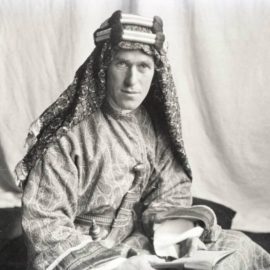

This article is an excerpt from the Shortform book guide to "Behind The Beautiful Forevers" by Katherine Boo. Shortform has the world's best summaries and analyses of books you should be reading.
Like this article? Sign up for a free trial here .
How is police brutality in India relevant to the book Behind the Beautiful Forever? Is the use of excessive force by the police prohibited under Indian law?
In the book, Abdul and his father were victims of police brutality. Abdul was arrested after a neighbor accused him of attempted murder, and he was tortured by the police who knew he was innocent. Police brutality in India is prevalent, despite its prohibition by the country’s Civil Rights Act.
Read on to learn more about how Abdul in Behind the Beautiful Forevers became a victim of police brutality in India.
Abdul and Karam Fall Victim to Police Brutality in India
The night Fatima went to the hospital, Zehrunisa knew that the police would come looking for the accused family members. She wanted Abdul’s father to go to the station in place of his children, and she encouraged Abdul to flee. Abdul couldn’t think of anywhere to go except his trash storage room. He hid there for the night as the police came to his family’s hut next door and arrested Karam. Eventually, he decided he’d rather turn himself in than hide in fear and leave his father to be beaten by the police. Plus, he knew he and his father weren’t guilty of the crime, and he wanted to be exonerated.
While in police custody, Karam and Abdul faced frequent beatings. When police beat Karam, they taunted him for being Muslim; when they beat Abdul, they tried to get him to confess to beating Fatima. Police brutality in India is endemic.Their detention wasn’t entered in police records, and they were kept in a room for unofficial police business. It had a small hole in the wall through which visitors could talk to those inside and offer small gifts, like cigarettes. Zehrunisa visited regularly to update Abdul and Karam on the status of Fatima and the case.
Zehrunisa had already paid some money to the police when she’d gone to the station earlier in the week to argue their case, but the police wanted more in exchange for making the case go away. Meanwhile, the government worker who took Fatima’s official statement and Asha were also asking for money to make the case go away. Abdul realized that the jail was being run like a business where innocence could be bought for the right price.
Eventually, Asha called the police station and insisted that the Husains hadn’t set Fatima on fire. During the call, Abdul could hear the officer on the phone telling Asha that Abdul and his father weren’t being tortured. After the call, the officer announced that they hadn’t committed the crime and Abdul and his father weren’t beaten again.
Karam thought that Asha likely did this as a show of her power, figuring he and Abdul would tell Zehrunisa about it and she’d accept Asha’s help. Asha would then receive a cut of the money paid to rid the family of the charges and help Fatima’s husband. They still refused to accept this kind of “help” from anyone.

———End of Preview———
Like what you just read? Read the rest of the world's best book summary and analysis of Katherine Boo's "Behind The Beautiful Forevers" at Shortform .
Here's what you'll find in our full Behind The Beautiful Forevers summary :
- A nonfiction account of the lives of residents of in one Mumbai slum
- How the globalized world affects many people in India
- A story of poverty, exploitation, and the struggle to survive






